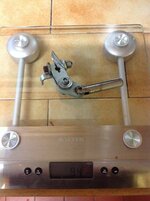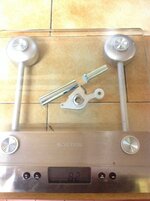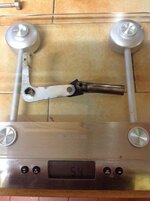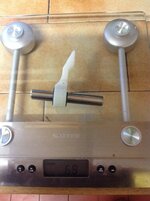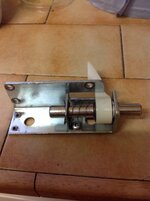I have a very nice example of a 1981 Vector. This is the first game of this age I have owned. My others are all post 1990, and it is a long time since I have played games as old as this in the wild.
I am trying to make it play properly. I have put flipper rebuild kits in. Adjusted leaf springs. Replaced rubbers. Cleaned solenoid plungers. Replaced the coil sleeves. Cleaned hi voltage and low voltage leaf springs correctly. New balls. New drop targets......
But it just feels so stodgy. It may be that the linear design of the slingshot and flippers makes it stodgy. The pop bumper is stodgy too. I can see that this old bally design is full of weight, inertia and friction compared to wpc games. It has huge solenoid plungers, huge chunks of nylon rubbing on metal assemblies etc.
In comparison, I have these parts very well tuned on my other games. I have serviced wpc flippers, slingshots, pop bumpers before and seen noticeable improvements.
I live 1 mile from where the a1 meets the a57, NG22 0SA. This is 20 mins from Lincoln and Newark. 40 Mins from Nottingham and Sheffield. Is there someone who has a similar era bally game I could try as a comparator please ? Or someone who knows how these games should play would be very welcome to try my Vector and other three
I don't want to throw good money after bad, but I just do not know what this game should be capable of. And my hard work and cash to date has not made much difference to its stodgy performance.
Thanks
I am trying to make it play properly. I have put flipper rebuild kits in. Adjusted leaf springs. Replaced rubbers. Cleaned solenoid plungers. Replaced the coil sleeves. Cleaned hi voltage and low voltage leaf springs correctly. New balls. New drop targets......
But it just feels so stodgy. It may be that the linear design of the slingshot and flippers makes it stodgy. The pop bumper is stodgy too. I can see that this old bally design is full of weight, inertia and friction compared to wpc games. It has huge solenoid plungers, huge chunks of nylon rubbing on metal assemblies etc.
In comparison, I have these parts very well tuned on my other games. I have serviced wpc flippers, slingshots, pop bumpers before and seen noticeable improvements.
I live 1 mile from where the a1 meets the a57, NG22 0SA. This is 20 mins from Lincoln and Newark. 40 Mins from Nottingham and Sheffield. Is there someone who has a similar era bally game I could try as a comparator please ? Or someone who knows how these games should play would be very welcome to try my Vector and other three
I don't want to throw good money after bad, but I just do not know what this game should be capable of. And my hard work and cash to date has not made much difference to its stodgy performance.
Thanks


